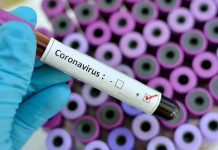Researchers at Tufts University have discovered a molecular mechanism that may reverse a genetic defect that causes Friedreich’s ataxia.
The researchers published the findings in the Proceedings of the National Academy of Sciences.
They explained that genetic defect, the multiple repetitions of a three-letter DNA sequence, which causes the disease could be reversed by boosting a natural process that can contract the repetitive sequences in living tissue.
Friedreich’s ataxia is a neurodegenerative disease characterized by the symptoms of difficulty walking, numbness in the extremities, and an impaired speech caused by degenerative changes in the nerve tissue in the spinal cord.
The neurological genetic disease is caused due to the presence of an expanded repetition of a three-letter genetic sequence.
Prof. Sergei Mirkin of the Department of Biology in the School of Arts & Sciences at Tufts University said, “The DNA repeats literally gum up the works. They can also cause other mutations in the surrounding DNA, or make chromosomes extremely fragile, breaking into pieces, or rearranging themselves.”
“If we can shrink the DNA repetition in tissues to levels found in healthy people, we might be able to stabilize the DNA and reduce the effects of disease,” added Prof. Mirkin.
It is important to understand the mechanism of GAA gene repeat expansion and contraction to develop the treatment strategy for battling Friedreich’s ataxia.
The researchers of the study developed an experimental system in yeast to “measure the effects of different interventions on contractions of DNA repeats and found that contractions happened usually during the process of DNA replication.”
Alexandra Khristich, a graduate student in Mirkin’s lab and first study author said, “While these results were uncovered in a yeast model, they do provide us with a clue into the mechanism of DNA repeat instability in Friedreich’s ataxia.” “I hope that our discovery would become a starting point for the potential development of therapeutic strategies that tip the balance toward DNA repeat contraction in patient tissues,” Khristich added.























